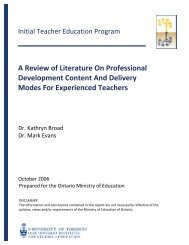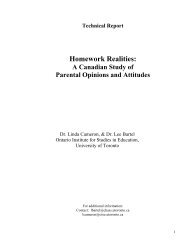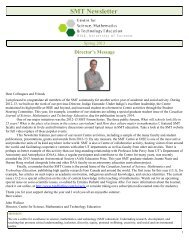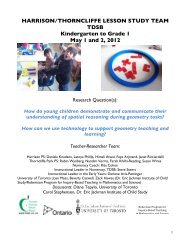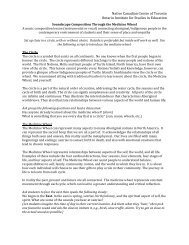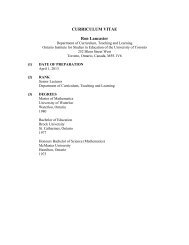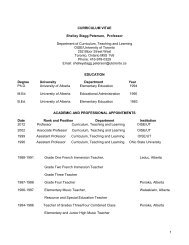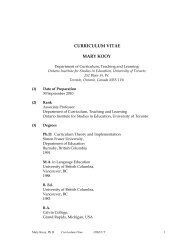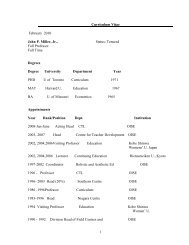The Ontario Curriculum, Grades 9-12 - Ministère de l'éducation ...
The Ontario Curriculum, Grades 9-12 - Ministère de l'éducation ...
The Ontario Curriculum, Grades 9-12 - Ministère de l'éducation ...
Create successful ePaper yourself
Turn your PDF publications into a flip-book with our unique Google optimized e-Paper software.
NATIVE STUDIES, GRADES 9 AND 10 (1999) AND<br />
GRADES 11 AND <strong>12</strong> (2000)<br />
See the Preface for important information on the organization of the following material.<br />
First Nation, Métis, and Inuit cultures in Canada, along with Indigenous cultures around the<br />
world, are characterized by a profound relationship with the natural environment, which informs<br />
various aspects of the lives of contemporary Aboriginal peoples. <strong>The</strong> Native studies curriculum<br />
explores this relationship and its implications from social, economic, political, and artistic<br />
perspectives. <strong>The</strong> expectations that address environmental topics and issues directly, along with<br />
those that provi<strong>de</strong> opportunities for making environmental connections, are i<strong>de</strong>ntified below.<br />
Expressing Aboriginal Cultures, Gra<strong>de</strong> 9, Open (NAC1O)<br />
Relationships<br />
• <strong>de</strong>monstrate un<strong>de</strong>rstanding of the relationships among Aboriginal peoples, their<br />
environments, and art forms<br />
– <strong>de</strong>scribe aspects of traditional and contemporary Aboriginal relationships, including the<br />
relationships of Aboriginal peoples among themselves, to their communities and nations,<br />
to Canada, and to the natural environment<br />
– <strong>de</strong>scribe how their art forms <strong>de</strong>monstrate the relationships of Aboriginal peoples to<br />
themselves, their families, their communities (including gen<strong>de</strong>r roles), their nations,<br />
Canada, and the natural environment<br />
– explain how natural environments affect the <strong>de</strong>velopment of Aboriginal art forms (e.g.,<br />
Inuit soapstone carving)<br />
– <strong>de</strong>scribe the role of art forms in relation to the environment in specific Aboriginal cultures<br />
• i<strong>de</strong>ntify how specific Aboriginal art forms reflect aspects of the society that produced them<br />
– i<strong>de</strong>ntify materials (e.g., tobacco, sage, <strong>de</strong>er hi<strong>de</strong>) that <strong>de</strong>monstrate specific relationships<br />
among Aboriginal peoples and their environments, including people<br />
– use appropriate natural materials to reproduce art forms that convey some aspect of<br />
Aboriginal peoples’ beliefs or values related to good relationships<br />
– produce art forms, using multimedia approaches, to illustrate various relationships to the<br />
natural environment<br />
Challenges<br />
– produce Aboriginal-style art forms that reflect solutions to contemporary issues of<br />
Aboriginal peoples<br />
Note: Environmental issues are important among the contemporary issues of Aboriginal peoples.<br />
Native Studies 89



